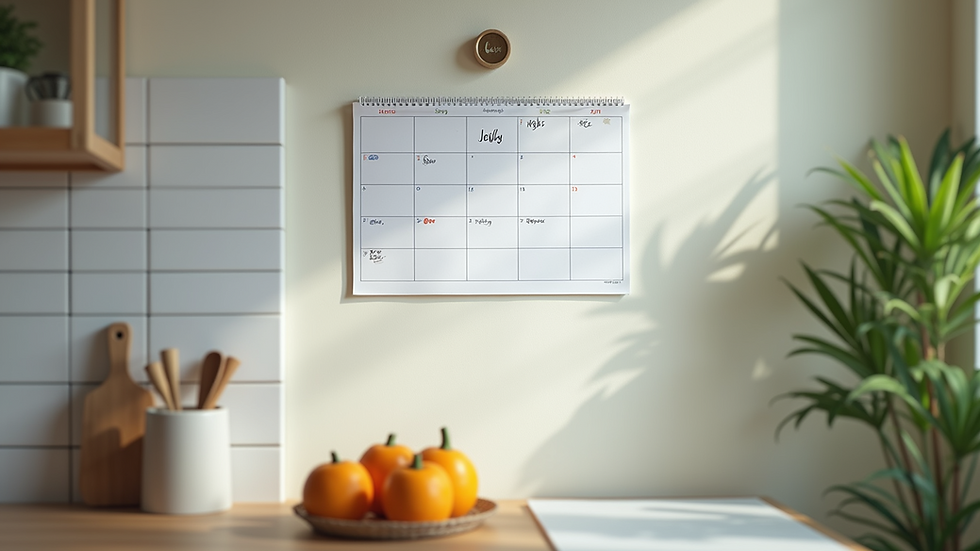Navigating Custody Disputes: A Parent's Guide
- Cassidy Bryant

- Sep 12
- 4 min read
Going through a custody dispute can be one of the most challenging experiences a parent can face. The emotional toll, combined with the legal complexities, can leave many feeling overwhelmed. However, understanding the process and knowing what to expect can make a significant difference. This guide aims to provide practical advice and insights to help parents navigate custody disputes effectively.
Understanding Custody Types
Before diving into the dispute process, it is essential to understand the different types of custody arrangements. Generally, custody is divided into two main categories: legal custody and physical custody.
Legal Custody
Legal custody refers to the right to make important decisions about a child's life. This includes decisions about education, healthcare, and religious upbringing. Parents can share legal custody, or one parent may have sole legal custody.
Physical Custody
Physical custody determines where the child lives. Similar to legal custody, physical custody can be joint or sole. Joint physical custody means the child spends significant time with both parents, while sole physical custody means the child lives primarily with one parent.
Understanding these types of custody is crucial as they will influence the outcome of any custody dispute.
The Importance of Mediation
Mediation is often a recommended first step in custody disputes. It involves a neutral third party who helps parents reach an agreement. Mediation can be less adversarial than court proceedings and often leads to better outcomes for children.
Benefits of Mediation
Cost-effective: Mediation is usually less expensive than going to court.
Faster resolution: Mediation can often resolve disputes more quickly than court schedules allow.
Less stress: The process is generally less stressful for both parents and children.
If both parents can agree on custody terms through mediation, they can submit their agreement to the court for approval. This can save time and emotional energy.
Preparing for Court
If mediation does not lead to an agreement, the next step may be court. Preparing for court is crucial. Here are some steps to take:
Gather Documentation
Collect all relevant documents that support your case. This may include:
School records: Show your involvement in your child's education.
Medical records: Demonstrate your role in your child's healthcare.
Communication records: Keep a log of communications with the other parent.
Understand the Law
Familiarize yourself with your state's custody laws. Each state has different guidelines regarding custody arrangements. Knowing these laws can help you present a stronger case.
Seek Legal Advice
Consider hiring a family law attorney. An attorney can provide valuable insights and help you navigate the legal system. They can also represent you in court, ensuring your rights are protected.
The Court Process
Understanding what to expect during the court process can help alleviate some anxiety. Here is a general overview of the steps involved:
Filing a Petition
The process begins when one parent files a petition for custody. This document outlines the parent's request and reasons for seeking custody.
Court Hearing
After filing, a court hearing will be scheduled. Both parents will have the opportunity to present their case. The judge will listen to both sides and may ask questions.
Custody Evaluation
In some cases, the court may order a custody evaluation. This involves a professional assessing the family situation and making recommendations to the court.
Final Decision
After considering all evidence, the judge will make a decision regarding custody. This decision will be based on the child's best interests.
The Best Interests of the Child
Throughout the custody process, the primary focus is always the child's best interests. Courts consider several factors when determining what is best for the child, including:
Emotional ties: The relationship between the child and each parent.
Stability: The child's need for a stable home environment.
Parental involvement: Each parent's involvement in the child's life.
Understanding these factors can help parents present their case more effectively.
Co-Parenting After Custody
Once a custody arrangement is in place, co-parenting becomes essential. Effective co-parenting can significantly benefit the child. Here are some tips for successful co-parenting:
Communication is Key
Maintain open lines of communication with the other parent. Use clear and respectful language, and focus on the child's needs.
Be Flexible
Life can be unpredictable. Being flexible with schedules and arrangements can help reduce conflict.
Focus on the Child
Always prioritize the child's well-being. Avoid speaking negatively about the other parent in front of the child.
Seeking Support
Navigating a custody dispute can be emotionally draining. Seeking support from friends, family, or professionals can be beneficial. Consider joining a support group for parents going through similar experiences.
Moving Forward
Custody disputes can be tough, but they do not have to define your relationship with your child. By understanding the process, preparing adequately, and focusing on co-parenting, you can create a positive environment for your child.
Final Thoughts
While custody disputes can be challenging, they also present an opportunity for growth and understanding. By prioritizing your child's needs and maintaining a cooperative approach with the other parent, you can navigate this difficult time more effectively. Remember, the goal is to create a loving and supportive environment for your child, no matter the circumstances.

Navigating custody disputes is not easy, but with the right tools and mindset, you can emerge stronger and more connected with your child.



Comments